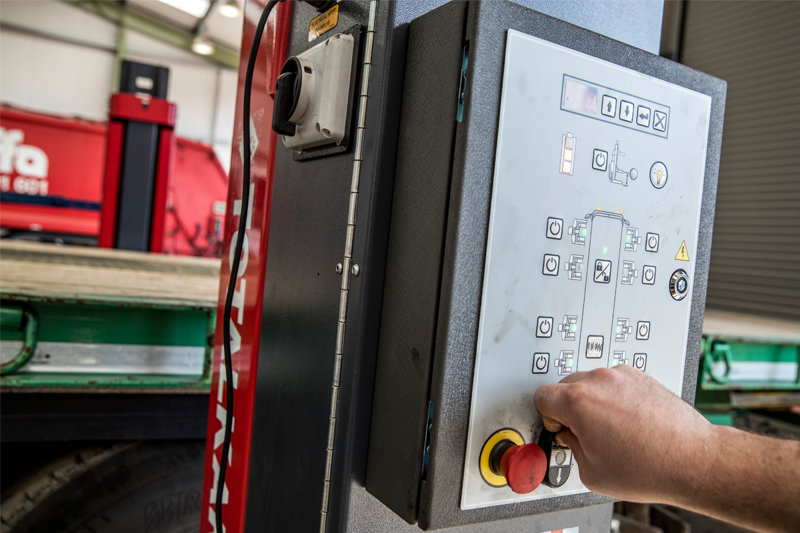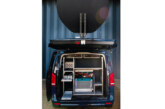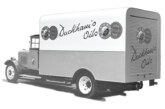
CVW was recently invited to take part in TotalKare’s online training course for mobile column lifts. Here’s what happened.
TotalKare has always prioritised customer training. The company’s traditional, CPD-accredited courses were widely regarded as one of the best in the business, with over 300 candidates taking part. However, now the lift specialist has taken its expertise online and is inviting commercial vehicle technicians to take part in this ‘digital era’ mobile column lift training. In the interest of those thinking about participating, CVW had a go at some of the available modules.
Core modules
Everyone who signs up for the training has to take two core modules: ‘Introduction to mobile vehicle lifts, rules and regulations’ and ‘Ancillary functionality overview’. Each module consists of a video, followed by a set of questions that must be answered before moving on. The two modules are not designed to trip up technicians at the first hurdle. Rather, they serve as basic summaries of health & safety practices, lift equipment legislation, employer/employee responsibility, and pre-use checks.
‘Introduction to mobile vehicle lifts…’
The ‘Introduction…’ module details the roles of LOLER (Lifting Operations and Lifting Equipment Regulation) and PUWER (Provision and Use of Workshop Equipment Regulation) in the day-to-day use of mobile column lifts. It establishes the need for proper execution of pre-use checks, the maintenance and inspection of equipment, plus plenty more. At first, this detail may seem intimidating, however, it is all carefully explained through a well-presented video covering the necessary information that a technician or employer needs to safely operate heavy-duty lifting equipment.
One particularly noteworthy section is the run-through of the pre-use checks that should be carried out before a mobile column lift is operated. The checks range from ‘read and understand the operator’s manual’ to ‘ensure there is a gap of at least one metre between vehicle bays’. It is important that these are taken on-board, as these details will be tested in the question section that must be completed at the end of the video.
The questions that follow the video are multiple choice and relatively simple. It should not take long to complete them, although it is worth bearing in mind that participants will need to get 100% in order to pass the module. However, once this is completed you are free to move on to the next section.
‘Ancillary functionality overview’
Much like the introductory module, the ‘Ancillary functionality overview’ consists of a video followed by a series of multiple- choice questions. The video follows a similar structure to the previous module, however this time round it is broken down into sections based on the piece of ancillary equipment focused on.
These include:
■ Small wheel adaptors
■ Adjustable wheel forks
■ Supportstands
■ Wide wheel adaptors
■ Trailer lifting beams
■ Light vehicle adaptors
■ Access steps
■ Transmission jacks
■ Forklift ramp systems

Perhaps the main differentiator between the two modules covered so far, is that the ancillary module goes into great detail on how to use the equipment and, as the title suggests, its functionality. This ranges from the relative complexity of using a trailer lifting beam, to the more simplistic, but no less important, safety practices of manoeuvring access steps.
Due to the amount covered in this module, it is naturally longer than the first. For this reason, there are more questions, which are also more specific. As with the first, a score of 100% is required to continue.
Additional modules
On top of the core modules, there are another seven additional modules that can be completed. CVW was tasked with the module entitled, ‘T8DC Mobile Column Lifts’. Again, there were differences between this module and its predecessor. Most notably, it starts by taking the participant through the operator’s manual.
To ensure understanding, the manual is quickly followed by a video that goes over the process once again. With this visual aid, technicians are able to better comprehend processes such as the pairing of column lifts, an aspect to the equipment that is vital for safely raising and lowering the vehicle being worked on. Once more, there are a number of multiple-choice questions at the end to round off the module. If the participant has engaged with the material, then the 100% pass mark should easily be within reach.
Why take part?
Heavy-duty equipment can be dangerous if misused. It is the responsibility of both the employer and employee to make sure the proper safety practices are used to prevent any unnecessary accidents or injuries. There are also financial benefits to using lifts in the correct manner. Trained use of lifting equipment means it is likely to last longer and require less maintenance, which in the long term can save a workshop money.
TotalKare has designed its ‘digital era’ mobile column lift training to be as flexible as possible, so that technicians aren’t taken away from carrying out vehicle repairs. With reducing vehicle downtime a perpetual concern for technicians, then online training may provide the perfect solution. So the real question is not ‘Why take part?’ but rather, why not?








